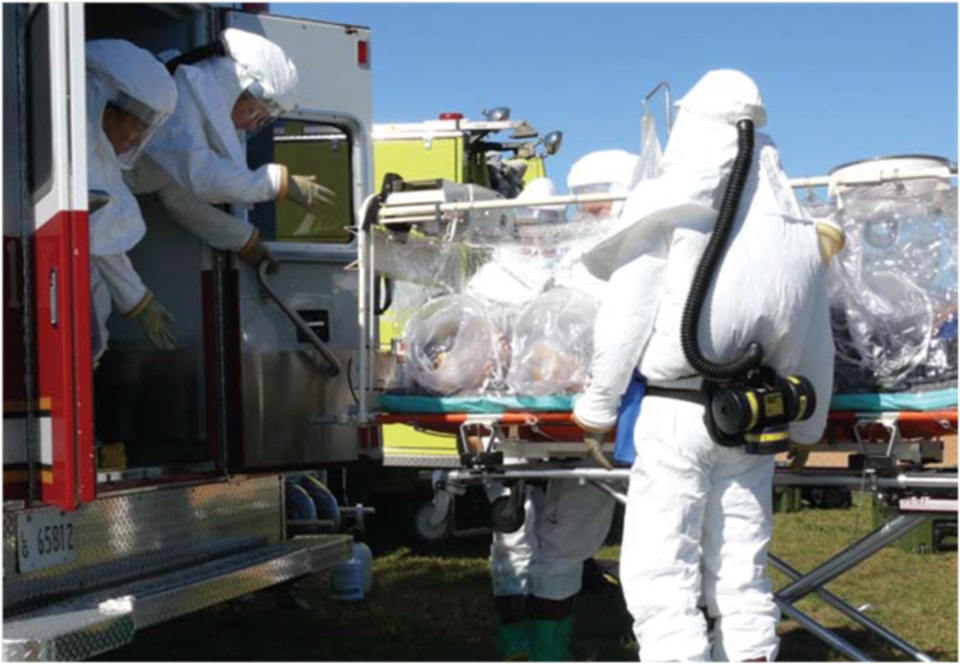
The U.S. government began preparing for biological warfare during World War II. Biological weapons were employed during the Korean War against North Korea and China. President Nixon in 1969 ended the U.S. use of biological weapons for offensive purposes.
The United States joined other nations in approving the Biological Weapons Convention (BWC), which took effect in 1975.
Even so, U.S. agents introduced microorganisms that harmed Cuba’s agriculture industry, intermittently, from the 1970s into the 1980s. They introduced the dengue virus in 1981, thereby provoking an epidemic that killed 169 Cubans.
In 2001 the George W. Bush administration disavowed the protocol that was essential for strengthening the BWC.
A 2017 report from the Latin American think-tank CEPRID tells of suspicious U.S. virologic research centers in Ecuador, of Brazilian soldiers dying of an unknown infectious disease, and “research centers located in countries like Brazil, Guatemala, Panama. Honduras, Costa Rica, República Dominicana, Haiti, [and] Guyana.” The report notes the existence in Peru of U.S. biological research laboratories operating under the façade of sponsorship by local universities.
“What’s certain,” the report says, “is that research is continuing and new viruses are being created or they are mutating to become resistant to all the vaccines that are known.”
Reports appeared in 2015 of a “laboratory [in Peru] for the development of bacteriologic war.” The reference was to one operated by a “Naval Medical Research Unit,” by NAMRU-6.
Beginning in WWII or shortly thereafter, the U.S. has operated NAMRUs, numbers one through six, within the United States and in Ethiopia, Italy, Southeast Asia, and Peru. Their purposes varied according to location. Three of them have been discontinued.
Officially, NAMRU-6, also known as NAMRU South, “researches and monitors various infectious diseases with military and public health implications in Central and South America.” With a presence in Peru since 1983, NAMRU-6 occupies a large office building and laboratory in Lima and a smaller laboratory in Iquitos, on the Amazon River.
NAMRU-6 is in the news these days. In an article appearing on June 13, Brazilian journalist Tereza Cruvinel notes a big increase in dengue cases in Peru, Paraguay, Bolivia, Brazil, and Argentina.
Describes unexpected resistance
She cites “an entomologist in a neighboring country” who describes unexpected resistance of the Aedes Aegypti mosquito, a vector of the dengue virus, to usually effective insecticides. She points to the entomologist’s reference to “a fellow researcher” who abandoned the U.S. NAMRU-South laboratory in Peru, because of “experiments there with the participation of the Pentagon and the Peruvian military.”
She notes that investigators there are creating new strains of the dengue virus, “which spread more quickly among mosquitoes, with a very high viral load.” Cruvinel reports that “Latin American doctors and scientists suspect scientific manipulation of the mosquito by powerful forces involving the U.S. and the pharmaceutical industry.”
In his article, “US biological weapons,” written in response to Cruvinel, Costa Rican journalist Jose Amesty claims that “the [current] outbreak of dengue fever, which is a record for sickness and death in Nicaragua, Honduras and Peru, is related to Pentagon experiments in 2023 aimed at creating a modified strain of the aforementioned pathogen.” He cites as his source a “scientist from Namru-South in Peru who, involved with experiments with dengue strains, who is disillusioned by implications for the health of millions of people.”
Amesty notes that personnel working at NAMRU-6 in Peru, most of them Peruvians, have had to take on U.S. nationality so they could be prosecuted, if need be, under U.S. jurisdiction and “not be responsible to the Peruvian justice system.”
Amesty learned from Gabriela Paz-Bailey, dengue specialist at the Puerto Rican branch of the U.S. Centers for Disease Control and Prevention, that a new strain of the dengue virus appeared in 2023 in Peru, one that “diffuses more rapidly among mosquitoes,” leaving them with an “an elevated viral load.” And, “the level of virus dosage sufficient to cause infection has diminished ten times.”
Presumably, it’s Amesty himself who notes that, “a similar development of a virus over such a brief period would be impossible without human intervention.” He adds that “North Americans achieved a high degree of resistance to insecticides on the part of mosquitos, and that reduced the effectiveness of steps taken by national governments to eradicate the insects with fumigation.”
Paz-Bailey informed Amesty that the NAMRU-6 laboratory has long been relying on the “help of insects” in devising “mechanisms for the proliferation of the virus” both in Peru and elsewhere in the region.
In 2016 the Pentagon’s Defense Advanced Research Projects Agency (DARPA) presented its plan for mobilizing “Insect Allies” to protect farmers’ crops from disasters. As described, the program “is poised … [to use] targeted gene therapy to protect mature plants within a single growing season.”
Insects would transfer viruses
Insects would transfer genetically modified viruses to plants where they affect the behavior of a growing plant’s genes, for example, increasing its growth rate in conditions of drought, plant diseases, or pesticide use.
The advent of the CRISPR system in 2012 allowed for this program involving insects to be developed. CRISPR, a relatively simple and readily accessible tool, allows for selective modification of the DNA of living organisms.
DARPA’s project provoked criticism, beginning with a report published in the journal Science on October 5, 2018. The title was “Agricultural research or a new bioweapon system?”
The authors drew attention to the Biological Weapons Convention. Their associations were with the Max Planck Institute and the Institute of International Law, both in Germany, and Montpellier University in France.
A simultaneous statement on this report, from the Max Planck Institute, focused on dual-use possibilities: “The findings of the Insect Allies Program could be more easily used for biological warfare than for routine agricultural use.” The statement suggested that “No compelling reasons have been presented by DARPA for the use of insects as an uncontrolled means of dispersing synthetic viruses into the environment.”
Journalist and peace activist Bharat Dogra maintains that “The DARPA program risks being perceived as a biological warfare research program that is justified on the basis of stated peaceful purposes … that misperception can start a trend of similar research with biological warfare implications by other countries as well.”
Dogra observes too that the mosquitoes themselves, the insect vectors, are being genetically modified along with the viruses they are carrying. He writes “According to a 2022 review by the Centers for Disease Control and Prevention, USA, since 2019 over a billion modified mosquitos have been released at world level, in several countries.”
The U.S. government maintains facilities across the world that are related to biological warfare. Fort Detrick in Maryland, the historic bio-weapons center in the United States, extends across hundreds of acres and is the workplace for almost 8,000 military and civilian employees.
A network of related U.S.-operated facilities shows up in nations bordering western Russia. Their role in monitoring and facilitating insect transmission of infectious diseases has been documented. Similar centers exist in Africa, the Middle East, and Southeast Asia.
The U.S. military could be building offensive capabilities for biological warfare. The nature of the DARPA program, activities of NAMRU-6 in Peru, and the U.S. record of disregarding the BWC over recent decades are all consistent with this assessment.
Also suggestive is the proliferation within the United States and abroad of U.S. installations dedicated to the study of noxious microorganisms and new ways for their transmission. Lastly, the simultaneous emergence of CRISPR technology and the wide dispersion of these activities seems to be more than a coincidence.
We hope you appreciated this article. At People’s World, we believe news and information should be free and accessible to all, but we need your help. Our journalism is free of corporate influence and paywalls because we are totally reader-supported. Only you, our readers and supporters, make this possible. If you enjoy reading People’s World and the stories we bring you, please support our work by donating or becoming a monthly sustainer today. Thank you!










